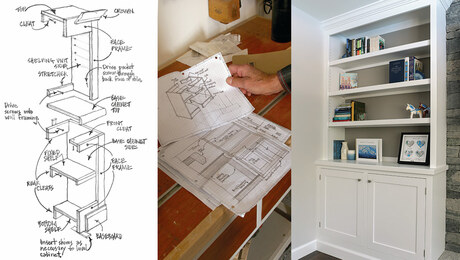Voltage/cycles and recharging times
I saw this posted on a travel website, about recharging electronic items while in Jamaica….
“The current is slower in Jamaica so charging things take longer”.
Their official electric grid is 110 volts at 50 Hertz or 220 volts.
So, would it be true that it would take a bit longer to recharge a cell phone there compared to somewhere with 120 volts and 60 Hertz?
Disregard that EVERYTHING takes longer in Jamaica! 😉
Quantum materiae materietur marmota monax si marmota monax materiam possit materiari?















Replies
NO!!!
Equipment with induction or synchrous motors would run slower.
Like contractor or table saw or clothes washer.
Like analog plug in electric clocks and timers.
.
A-holes. Hey every group has to have one. And I have been elected to be the one. I should make that my tagline.
No
The current is slower in Jamaica
True if the charger is operated off a given size undershot hydro wheel on a stream <G>
An outright flat No is not technically correct in most cases.
Actually, a cheap charger (rectifier and small xfmr only like wall plug ins) designed for 120 Vac when operated off only 110 vac may not even fully charge a battery. Same problem for a low cost small xfmr charger in Japan -they have only 100 Vac 60 Hz. Worst case cheapo chargers could possibly fry and burn on 50 Hz if run at 120 V.
No difference in charging for a high quality charger that uses a dc-dc converter designed for 85-250 vac 40-70 Hz input
Also, some of the car battery chargers here made with a 'quick start' winding may overheat and burn up off 50 Hz due to magnetic saturation of the core.
Primary voltage of a transformer must be less than N*B*A*2pi*f to avoid saturation and overheating. 110 V at Jamaca allows the 50 Hz to NOT burn up small chargers as the voltage as well as frequency has been reduced. However, as said for a simple rectifier, the peak voltage is less so a battery conceivable would not charge totally, plus the voltage would be lower, hence the current less (NOT slower) and charging WOULD take longer.
Edited 4/2/2007 7:24 pm ET by junkhound
Edited 4/2/2007 7:27 pm ET by junkhound
Depending on several factors, charge time may in fact be affected. First off, transformers will be slightly less efficient (and slightly more likely to overheat). But, more significantly, devices that use switching-type speed controls and chargers that use switching-type current regulators might not be able to work for the entire cycle of the AC waveform, but might instead cut off a hair too soon, resulting in a 5/6ths of the desired power and, for a charger, about 1/5 longer charge time.
And, of course, if you're getting 110V instead of 120V that will affect things too.
I was thinking that way too. But I can also see it not mattering much at all since the OUTPUT is so much lower, DC voltage.
My cell phone charger says INPUT of AC 100 to 240 Volts 50/60 Hz at 0.2Amps OUTPUT of DC 5.0 Volts at 1.0Amps.
It's not all that important especially when on vacation! But I am curious. Maybe next time I go, I'll bring a timer and a dig multi-meter. Probably cause a red-alert thru customs when they scan my bag at the airport!
Quantum materiae materietur marmota monax si marmota monax materiam possit materiari?
Yeah, the big danger would be a "dumb" charger that didn't develop enough voltage to charge at all, or a charger that simply burned up due to the mismatch.
But most equipment should be "within tolerances" at 110V 50Hz.
So convenient a thing it is to be a reasonable Creature, since it enables one to find or make a Reason for everything one has a mind to do. --Benjamin Franklin
I remember my wife's stepdad plugging a charger in in Norway and starting a small fire. He supposedly had a step-down unit of some sort, but I suspect it was the rectifier type, and the DC voltage didn't amuse the charger's transformer.
So convenient a thing it is to be a reasonable Creature, since it enables one to find or make a Reason for everything one has a mind to do. --Benjamin Franklin
Must not have had the "good" universal converter kit.
Last month when I was in Jamaica I meant to take a photo of something in the hotel room. They had the ac plug for the clock/radio hardwired to the outlet by running the zipcord under the outlet coverplate! Theft deterence system I guess.
Quantum materiae materietur marmota monax si marmota monax materiam possit materiari?
INPUT of AC 100 to 240 Volts 50/60 Hz at 0.2Amps OUTPUT of DC 5.0 Volts at 1.0Amps
You obviously have a PWM* switching regulator charger, there will be zero difference in charge rates.
You likely have Li-ion battery also, which pretty much require the more sophisticated charger.
* PWM = pulse width modulated
Yep. Most cellphones made within last few years will have Li Ion batteries (or better if exists), right? Even my 4 yr old dig camera has Li Ion.
Quantum materiae materietur marmota monax si marmota monax materiam possit materiari?